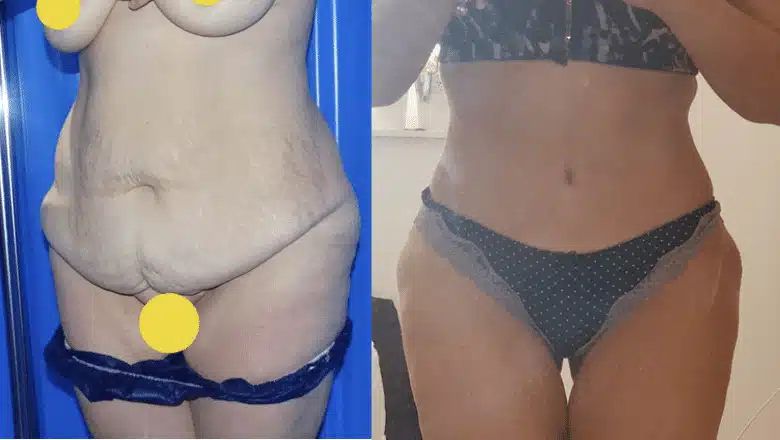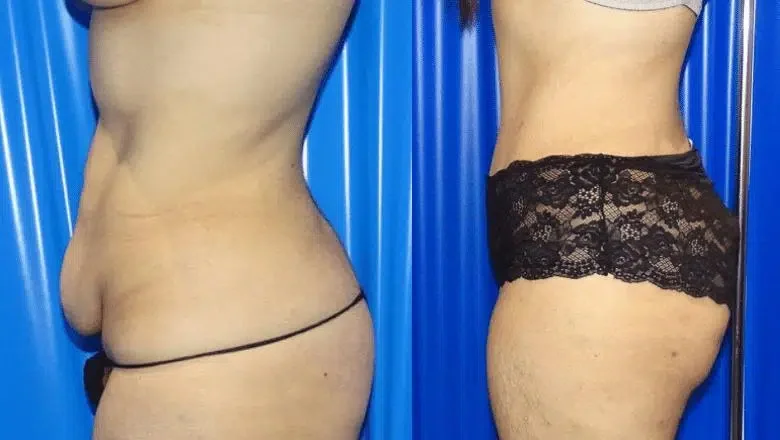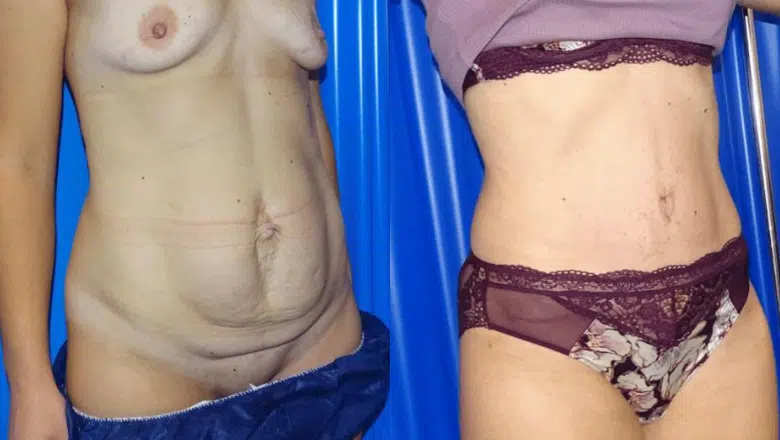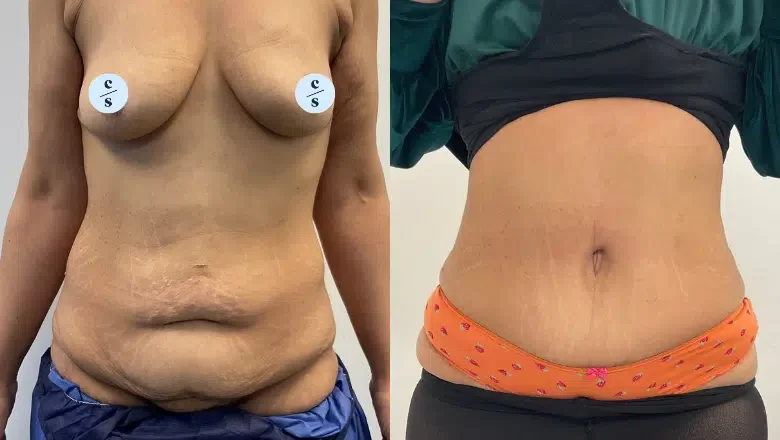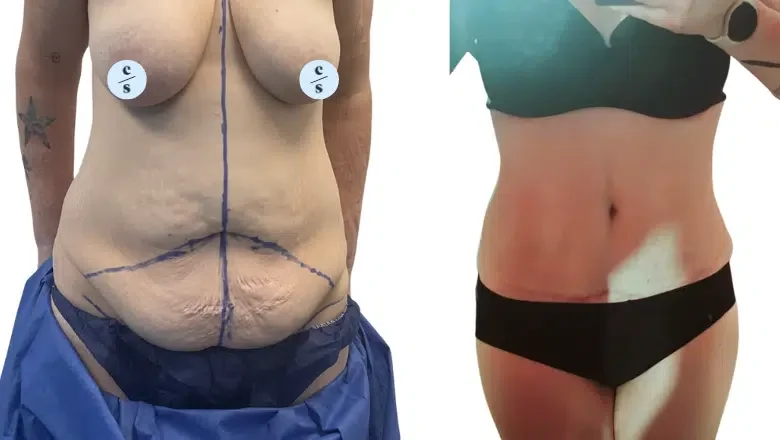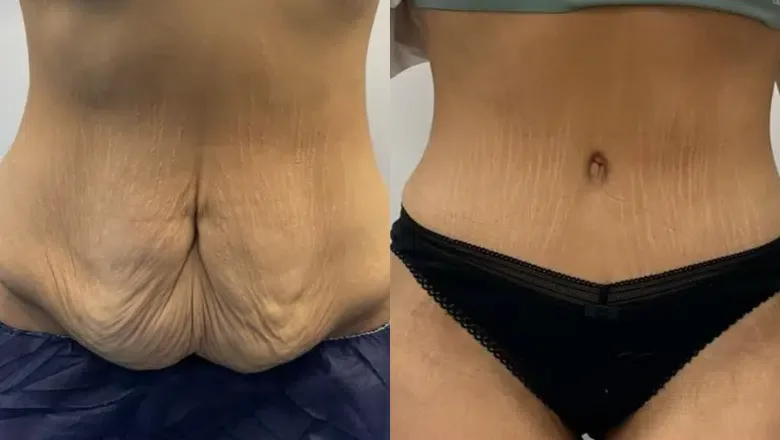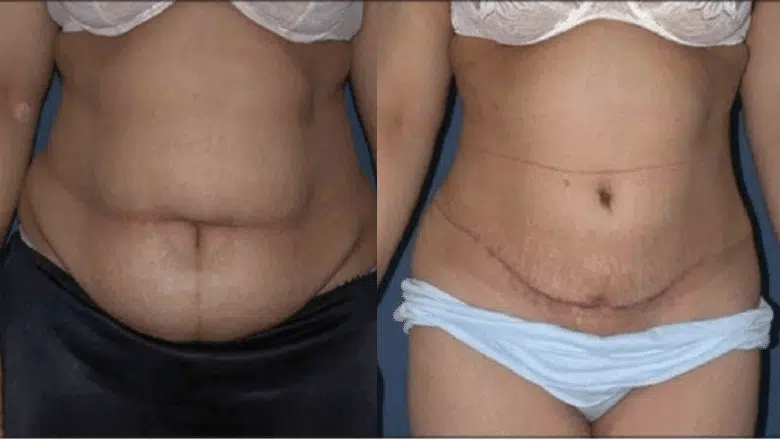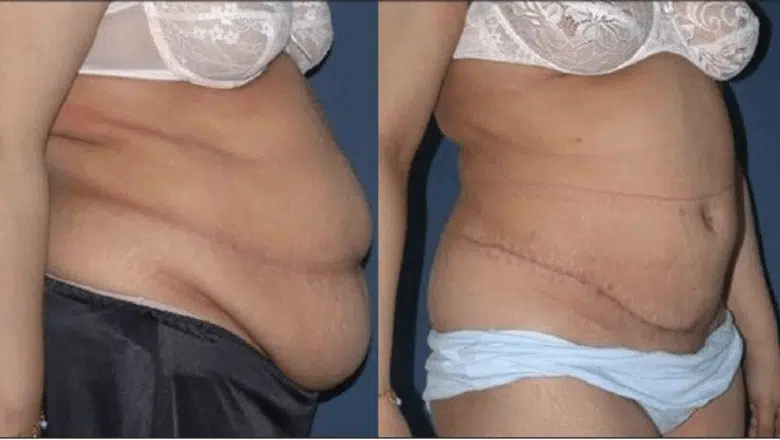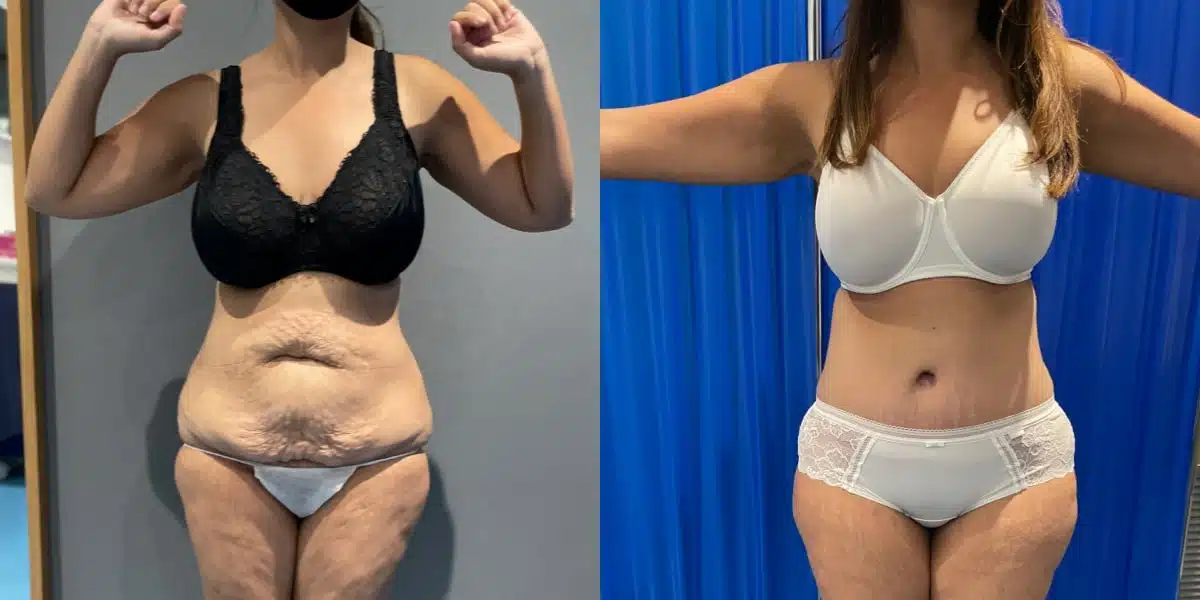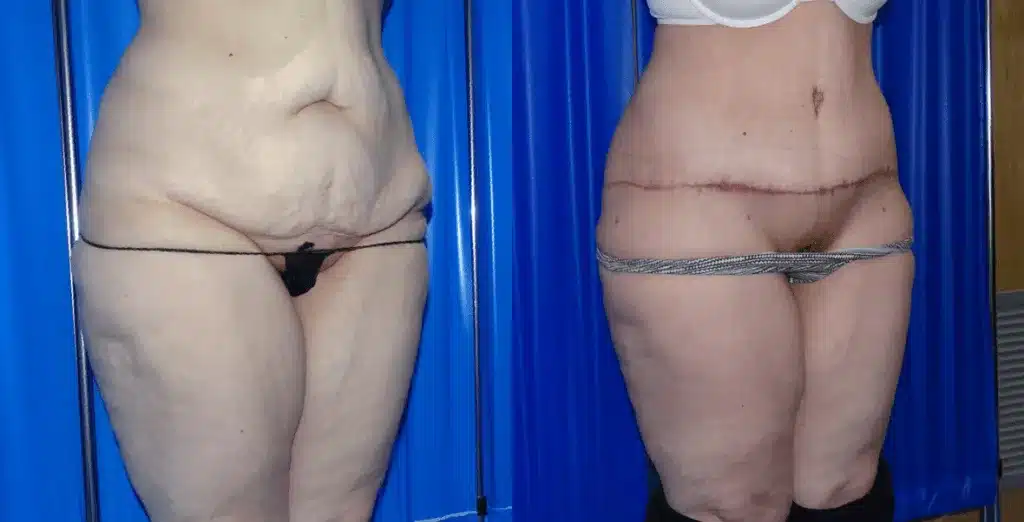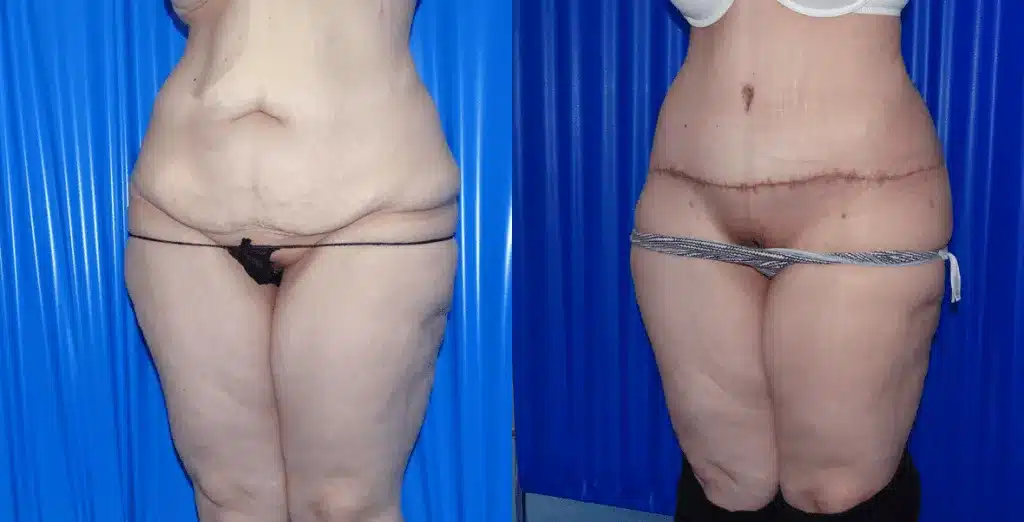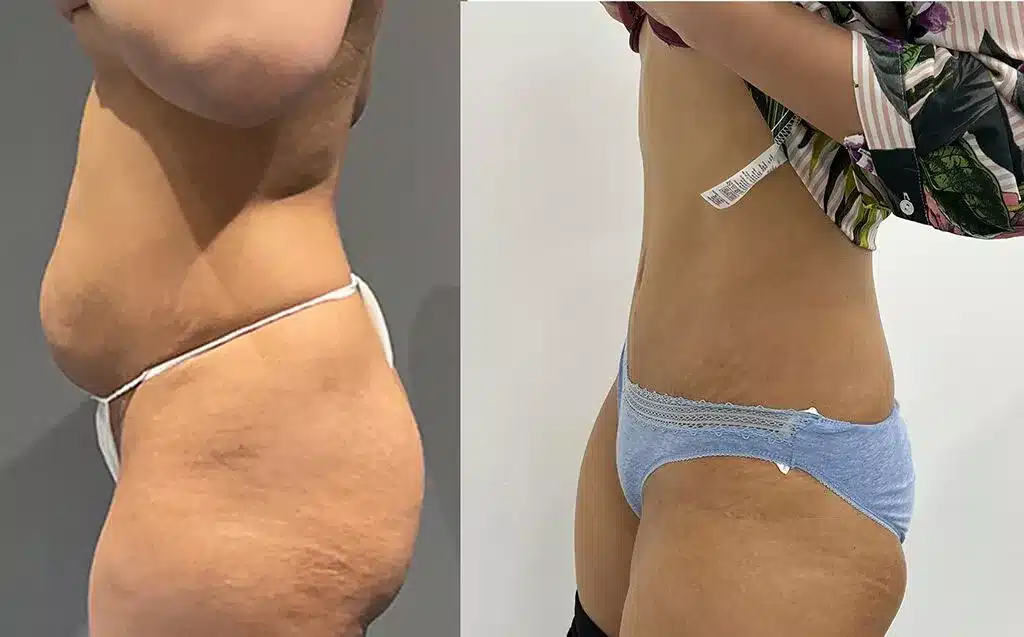A tummy tuck, also known as abdominoplasty, is a surgical procedure designed to remove excess fat and loose skin from the lower abdomen. During the procedure, the surgeon tightens weakened or separated abdominal muscles by bringing them together and uses sutures to reinforce the connective tissues within the area. This comprehensive approach not only flattens the stomach but also reshapes the abdominal profile, resulting in a firmer and more toned appearance.
Many people choose to undergo this surgery to alter their body contours, especially after significant weight loss or following pregnancy, when excess tummy skin and weakened muscles are common concerns. The procedure aims to reduce surplus abdominal skin and improve muscle integrity, helping patients regain confidence in their body image. In this article, we explore several essential tips to help you achieve the best possible results from your tummy tuck surgery.
Additionally, a tummy tuck can effectively eliminate stretch marks and redundant skin located in the lower abdominal region, as this portion of skin is often removed during the surgery. However, it’s important to note that stretch marks outside the lower abdomen may not be addressed, since those areas are not typically involved in the procedure.
This surgical method can also be combined with other cosmetic procedures. For instance, when performed alongside breast surgery, it becomes part of a comprehensive ‘combined surgery’ package, often referred to as a ‘mummy makeover‘. This approach allows patients to address multiple aesthetic concerns simultaneously, potentially reducing overall recovery time and costs.
At Centre for Surgery in London, we pride ourselves on having a team of highly experienced plastic surgeons who specialise in tummy tuck procedures. Each year, we perform hundreds of these operations, both with and without muscle repair, helping patients achieve their desired body shape and boosting their self-esteem. Our commitment to excellence ensures that you receive the highest standard of care throughout your surgical journey.
Top Nine Strategies to Ensure Your Tummy Tuck is a Success
1. Maximising Tummy Tuck Results with the Addition of Liposuction
Incorporating liposuction into a tummy tuck procedure can significantly enhance fat removal and improve the overall shaping of the abdominal area. This combined approach allows surgeons to contour the stomach more precisely by targeting not just the front, but also the middle and sides of the abdomen. By addressing these areas from various angles—front to back and side to side—liposuction complements the tummy tuck to achieve a more harmonious and proportionate silhouette.
RELATED: 3 Reasons to Combine Liposuction with a Tummy Tuck
When liposuction is integrated with a tummy tuck, the procedure is often referred to as a Brazilian tummy tuck or lipo-abdominoplasty. One of the main advantages of this combination is that it enables surgeons to create a more refined and sculpted final result. This is particularly beneficial in the upper pubic region, where excess fat can be stubborn and challenging to eliminate through a tummy tuck alone. Using liposuction, surgeons can remove these difficult fat deposits, leading to a smoother and more contoured abdominal profile.
The inclusion of liposuction not only enhances the aesthetic outcome but also contributes to a more natural-looking appearance. Patients often find that this combined procedure provides them with increased confidence and satisfaction, as it addresses multiple concerns in a single surgical session. The integration of these techniques exemplifies how modern surgical practices are evolving to offer more comprehensive solutions for body contouring and reshaping.
2. Enhancing Abdominoplasty with a Mons Lift: Achieving a Balanced Lower Torso
When planning for an abdominoplasty, commonly known as a tummy tuck, patients might consider the addition of a mons lift to their surgical procedure. A mons lift, or pubic lift, is a complementary surgery that focuses on reducing and reshaping a protruding mons pubis—the mound of fatty tissue situated above the female genitalia. By combining these two procedures, individuals can address concerns in both the abdominal and pubic areas, leading to a more harmonious and aesthetically pleasing outcome.
The mons pubis, sometimes referred to as the FUPA (Fatty Upper Pubic Area), can become prominent due to various factors such as ageing, weight gain, pregnancy, previous surgeries, or genetic predisposition. This bulging can cause discomfort and self-consciousness, as it may be noticeable in certain clothing or swimwear. While diet and exercise can help reduce overall body fat, they often have limited effect on this specific area.
It’s important to recognise that a tummy tuck, while effective in flattening and tightening the stomach, can inadvertently make an unaddressed mons pubis appear more prominent. As the abdominal skin is tightened and excess tissue is removed, the relative size of the mons pubis may seem larger in contrast to the newly contoured abdomen. This is why many patients choose to include a mons lift as part of their abdominoplasty surgery.
Incorporating a mons lift involves lifting, tightening, and sometimes liposuction of the mons pubis to reduce excess skin and fat. This results in a smoother transition between the abdomen and the pubic area, enhancing the overall silhouette of the lower torso. The procedure can significantly improve comfort and confidence, allowing patients to wear a wider variety of clothing without concern for unwanted bulges or protrusions.
3. The Significance of Permanent Deep Muscle Repair in Abdominal Surgery
Permanent deep muscle repair is a crucial component of abdominal surgery, particularly in procedures like tummy tucks. This technique involves surgically bringing the stretched or separated abdominal muscles back together, effectively restoring the muscle structure that has been compromised. The separation of these muscles, a condition known as diastasis recti, can occur due to various reasons such as pregnancy, significant weight gain or loss, certain medical conditions, and genetic factors.
RELATED: Tummy Tuck with Muscle Repair
When the abdominal muscles are stretched apart, it leads to a weakened core and a protruding abdomen, which can affect posture and physical comfort. Unfortunately, no amount of physical exercise or targeted workouts like sit-ups can fully correct this muscle separation. This is because the issue lies in the connective tissue between the muscles, which cannot be strengthened through exercise alone. Surgical intervention becomes necessary to repair the separation and reinforce the abdominal wall.
During the procedure, the surgeon addresses the muscle separation in both horizontal and vertical planes to ensure a comprehensive repair. Permanent sutures are carefully used to stitch the edges of the muscles back together, re-establishing the integrity of the abdominal wall. This meticulous process not only tightens the muscles but also provides long-lasting support to the core structure of the body.
The benefits of repairing separated abdominal muscles extend beyond aesthetic improvements. While patients certainly achieve a flatter and more toned stomach, they may also experience significant functional advantages. Restoring the muscle structure can alleviate lower back pain by providing better support to the spine and improving posture. Additionally, some patients find relief from incontinence issues, as a strengthened abdominal wall enhances the support of pelvic organs and can improve bladder control.
4. The Importance of Optimal Belly Button Placement and Design in Tummy Tuck Surgery
The positioning and appearance of the navel—or belly button—are carefully considered to achieve a natural and aesthetically pleasing result. As excess tissue is removed and the abdominal skin is tightened, failing to appropriately reposition the belly button could lead to it being displaced lower on the abdomen, potentially ending up unnaturally close to the mons pubis area. Such a misplacement would not only look disproportionate but could also detract from the overall success of the surgery.
RELATED: What Happens to the Belly Button in a Tummy Tuck?
To prevent this, the surgeon meticulously relocates the belly button to a position that aligns with the newly contoured abdomen. This is accomplished without completely removing the navel. Instead, the surgeon preserves the original belly button and brings it through a new opening in the adjusted skin. This technique ensures that the belly button maintains its vascular connections and sensory nerves, which is important for healing and sensation.
The design of the belly button is a subtle yet significant aspect of the procedure. A well-crafted navel should appear natural, with considerations given to its size, shape, and depth. Surgeons often use specialised techniques to create a belly button that complements the patient’s body proportions. For instance, some may fashion a small hood of skin at the top of the navel to mimic the shadowing seen in natural belly buttons, enhancing the realism of the result.
5. Strategically Positioning Incision Scars for Minimal Visibility
Scars are an unavoidable part of any surgical procedure, but for most patients, they are a small inconvenience compared to the significant benefits surgery can provide. It is entirely natural to prefer that any incision scars be placed as low as possible, ideally beneath the line of underwear or swimwear, to keep them discreet and less noticeable in daily life. Surgeons are well aware of this preference and make every effort to position incisions accordingly, aiming to minimise visible scarring and enhance patient satisfaction.
However, it’s important to understand that due to individual differences in body shape, size, and the specific requirements of the surgery, it isn’t always possible to place scars exactly where a patient might wish. Factors such as the amount of excess skin to be removed, the elasticity of the skin, and the overall anatomy of the abdominal area can influence where incisions need to be made for optimal results. Each tummy tuck procedure is unique and tailored to the individual’s physical characteristics and desired outcomes.
During your consultation at our Baker Street clinic in Marylebone, your surgeon will discuss in detail what can realistically be achieved in your particular case. They will explain the surgical plan, including the proposed placement of incisions, and address any concerns you may have about scarring. This open dialogue ensures that you have a clear understanding of the procedure and can set appropriate expectations.
6. Embracing Drain-Free Surgery: Minimising the Use of Surgical Drains in Tummy Tuck Procedures
There is a growing preference for performing tummy tuck procedures without the use of postoperative drains. This trend towards ‘drain-free’ tummy tucks is driven by advancements in surgical techniques that aim to enhance patient comfort and reduce recovery time. By utilising methods such as deep quilting sutures and other sophisticated interventions, surgeons can often eliminate the need for drains while still achieving excellent aesthetic results.
Deep quilting sutures involve meticulously stitching the layers of tissue together in a way that minimises the space where fluids can accumulate. This technique not only helps in contouring the abdomen more precisely but also reduces the likelihood of complications like seroma formation, where fluid collects under the skin. The careful application of these sutures ensures that the tissues adhere properly during the healing process, promoting a smoother recovery and less postoperative discomfort.
RELATED: No-Drain Tummy Tuck for Best Recovery
However, it’s important to recognise that while avoiding drains is a desirable goal, they may still be necessary in certain situations to attain the best possible outcome. Each patient’s anatomy and surgical needs are unique, and the decision to use drains is made based on factors such as the extent of tissue removal and the patient’s overall health. When drains are deemed necessary, they are crucial in preventing fluid build-up, reducing swelling, and facilitating proper healing.
If your procedure requires the insertion of a drain tube, it is vital to follow your surgeon’s instructions carefully on how to manage and care for it after the operation. Proper handling of the drains includes keeping the insertion site clean to prevent infection, monitoring the amount and type of fluid being collected, and knowing how to secure the drain to avoid accidental pulling or displacement. Our surgical team will provide detailed guidance on these aspects to ensure you are comfortable and confident in managing the drains at home.
7. Ensuring a Smooth and Comfortable Recovery with Minimal Discomfort
It is common to experience some pain, swelling and bruising during the initial postoperative period following a tummy tuck surgery. However, it’s important to remember that everyone has a different tolerance for pain, so the level of discomfort can vary from person to person. Understanding this can help set realistic expectations for your recovery process.
RELATED: Recovery after Tummy Tuck – Top Tips after Abdominoplasty
Rest is absolutely crucial during this time. While it might be tempting to jump back into your daily routine as quickly as possible, doing so can actually prolong your recovery or lead to complications such as reopened incisions or increased swelling. Overexerting yourself can strain the surgical site, potentially causing harm or delaying healing. Therefore, it’s essential to follow your surgeon’s advice meticulously, allowing your body the time it needs to heal properly.
Managing any discomfort can be effectively achieved with prescribed medication and ample rest. Taking pain relief as directed can significantly reduce discomfort, making your recovery period more manageable. Resting not only helps to minimise pain but also lessens the strain on your abdominal muscles, which is vital for proper healing.
Despite the emphasis on rest, gentle movement is encouraged as soon as you feel able. Slowly walking around your home can promote healthy blood circulation throughout the body, which aids in reducing swelling and lowers the risk of blood clots. This light activity can be as simple as taking short, frequent walks around your living space, gradually increasing as your strength returns.
8. Embracing Gentle Activity: The Role of Early Movement in Recovery
Following surgery, it’s crucial to begin moving as soon as it’s safe to do so, but always with caution to avoid placing undue stress on your body. Engaging in light, controlled activity not only aids in your overall recovery but also significantly reduces the risk of developing blood clots, such as deep vein thrombosis (DVT) or pulmonary embolism (PE). These conditions are more likely to occur when you remain inactive for extended periods, as immobility can lead to poor blood circulation.
RELATED: How Long Will I Be Hunched Over After a Tummy Tuck?
Staying in bed for too long can have additional drawbacks beyond the increased risk of blood clots. Prolonged inactivity may result in the loss of muscle mass and can contribute to discomfort, including back and neck pain due to sustained pressure on certain areas of the body. In the immediate hours after your surgery, it’s beneficial to participate in a supervised mobilisation programme. Our team will guide you through gentle movements appropriate for your condition, ensuring that you begin the recovery process safely and effectively.
By the day after your operation, you should make an effort to walk slowly around your home or hospital room. This doesn’t mean engaging in any strenuous activity but rather taking short, easy walks to promote blood flow and help your muscles adjust. Gentle stretching can also be beneficial, but it’s important not to overdo it. The key is to stimulate your muscles without causing strain or risking injury to the surgical site.
RELATED: How to Walk After A Tummy Tuck
When it comes to resuming more vigorous exercise, patience is essential. You should avoid any form of strenuous physical activity for at least six weeks following your surgery. Before you consider returning to your regular exercise routine, make sure to consult with your surgeon. They can provide personalised advice based on your healing progress and overall health. Generally, it’s recommended to wait at least eight weeks before engaging in intense workouts or heavy lifting, as your body needs sufficient time to heal internally.
9. Effective Strategies for Minimising Scarring After a Tummy Tuck Surgery
After undergoing a tummy tuck, taking proper care of the incision area is essential to minimise scarring and ensure a smooth recovery. Immediately following the surgery, your surgeon will apply dressings to the incision sites to protect them from infection and to promote healing. These dressings serve as a barrier against bacteria and help keep the wounds clean and moist, which is beneficial for skin regeneration.
RELATED: How to Minimise Scars after a Tummy Tuck
In addition to the dressings, you will be provided with a compression garment specifically designed to support your midsection. This garment plays a critical role in the healing process by reducing swelling, supporting the abdominal area, and minimising the risk of blood clots forming. The gentle pressure it applies helps the skin adhere properly to the underlying tissues, which can significantly improve the final appearance of any scars.
It’s important to wear the compression garment continuously, removing it only when you shower or need to wash it. Consistent use maximises its effectiveness in aiding recovery. Typically, patients are advised to wear this supportive garment for about six weeks after the surgery, but your surgeon will provide specific guidance based on your individual healing progress.
RELATED: Will My Tummy Tuck Scar Be Visible?
Why Choose Centre for Surgery
Selecting the right clinic for your tummy tuck procedure is a vital step towards achieving the results you desire. At Centre for Surgery, we are committed to providing exceptional care and outstanding outcomes for our patients. Here are some reasons why we are the premier choice for your cosmetic surgery needs.
Our clinic, located on Baker Street in the heart of London, is equipped with state-of-the-art facilities and adheres to the highest standards of safety and hygiene. Our team of highly experienced plastic surgeons specialises in tummy tuck procedures, both with and without muscle repair. They are dedicated to utilising the latest surgical techniques to ensure optimal results while minimising recovery time.
We pride ourselves on offering personalised care tailored to each individual’s needs. From your initial consultation through to your post-operative appointments, our friendly and professional staff are here to support you every step of the way. We understand that undergoing surgery is a significant decision, and we strive to make the experience as comfortable and reassuring as possible.
Patient Testimonials
“My experience with Centre for Surgery was exceptional. The team made me feel at ease from the very beginning, and I am thrilled with the results of my tummy tuck.” – Jessica, London
“The level of care and professionalism at Centre for Surgery exceeded my expectations. The surgeons and staff were attentive and informative, guiding me through the entire process.” – Amelia, Surrey
“I highly recommend Centre for Surgery. The results of my procedure have boosted my confidence immensely, and the support I received was outstanding.” – Sophie, Kent
Finance Options
We believe that everyone should have access to high-quality cosmetic surgery. To help make this possible, we offer a range of flexible finance options to suit different budgets. Our team can assist you in finding a payment plan that works for you, ensuring that financial considerations don’t stand in the way of achieving your goals.
Learn More About Us
Please visit our About Us page for more information about our clinic and ethos. You can also explore our Team Members section to get to know the highly skilled professionals who make up our team.
Stay informed with the latest insights and updates by reading our Plastic Surgery Blog, where we cover a wide range of topics related to cosmetic procedures, recovery tips, and patient experiences.
Booking a Consultation
Ready to take the next step towards achieving your desired body shape? Contact us today to schedule a personalised consultation with one of our expert surgeons. You can reach us by phone at 0207 993 4849 or email us at contact@centreforsurgery.com. Our friendly staff are here to answer any questions you may have and guide you through the booking process.
Frequently Asked Questions
We understand that you may have many questions about the tummy tuck procedure and what to expect. Please visit our Clinic FAQs for answers to common queries. If you need further information, don’t hesitate to get in touch.
At Centre for Surgery, your safety, comfort, and satisfaction are our top priorities. Let us help you embark on your journey towards a more confident and rejuvenated you.


